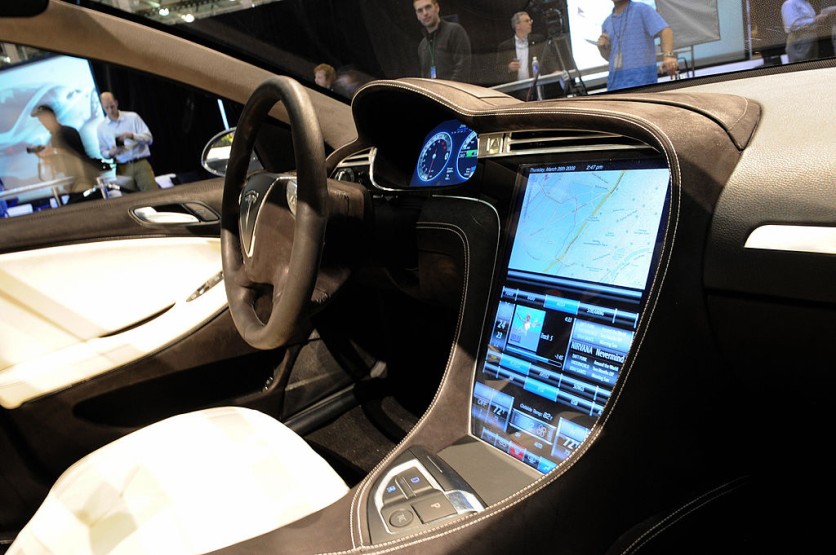
General Motors (GM) has been granted a patent for a novel innovation that will enhance the user experience of smartphones, tablets, and other touchscreen devices and, more importantly, that may benefit drivers.
According to PhoneArena, the automaker has patented screens that automatically remove fingerprints, grease, and oil!
GM is a company that has been making cars and trucks for a long time, but clearly, it is also very much in touch with cutting-edge technological development.
These days, it is common for cars to feature a touchscreen display that is easy to smudge with fingerprints. Over time, fingerprints accumulate on display, potentially obscuring crucial information like the battery's remaining life and the impending need for a charging break. This tech would be very helpful for cars with Android Auto or Apple CarPlay.
How it Works
US Patent and Trademark Office granted GM the patent US 11,579,340 for the "self-cleaning system for displays using light-emitting diodes emitting invisible violet light," as Gizmodo reported. This describes how the screen would use violet pixels that the human eye cannot detect alongside the more familiar red, blue, and green.
Moreover, a photocatalyst that absorbs certain wavelengths would be applied as a coating to the touchscreen surface.
If the driver chooses to clean the vehicle at any point throughout the day or if the car is left parked overnight, the violet pixels will be set to use.
The combination of the ultraviolet energy from the sun and the violet pixels would activate the photocatalyst in the screen coating. This will then set off a chemical process, which decomposes the organic substance that causes fingerprint smudges.
In addition to removing fingerprints, the method will also remove oil, grease, and fast food residue from the glass.
Conferring Benefits to Other Devices
There has been no word from GM whether it intends to pursue the technology as an essential feature in its future cars or if it would just sit on the patent to prevent other manufacturers from offering it.
Self-cleaning touchscreens would be a great addition to a wide variety of products, not just automobiles.
LED displays with photocatalytic coating and a power supply to activate the violet micro-LEDs included in the LED panel are all needed to use the patented technology in other devices. Computers, mobile devices, kiosks, TVs, teller machines, and home appliances are among the numerous items described in the patent.
Naturally, GM may always choose not to use this method, as is the case with any patent. Yet, if this is feasible, a smartphone maker might license the patent and include it in a future device's display.
In order to lessen the number of fingerprints left on the glass of a smartphone's display, oleophobic coatings are now standard.


![Apple Watch Series 10 [GPS 42mm]](https://d.techtimes.com/en/full/453899/apple-watch-series-10-gps-42mm.jpg?w=184&h=103&f=9fb3c2ea2db928c663d1d2eadbcb3e52)


